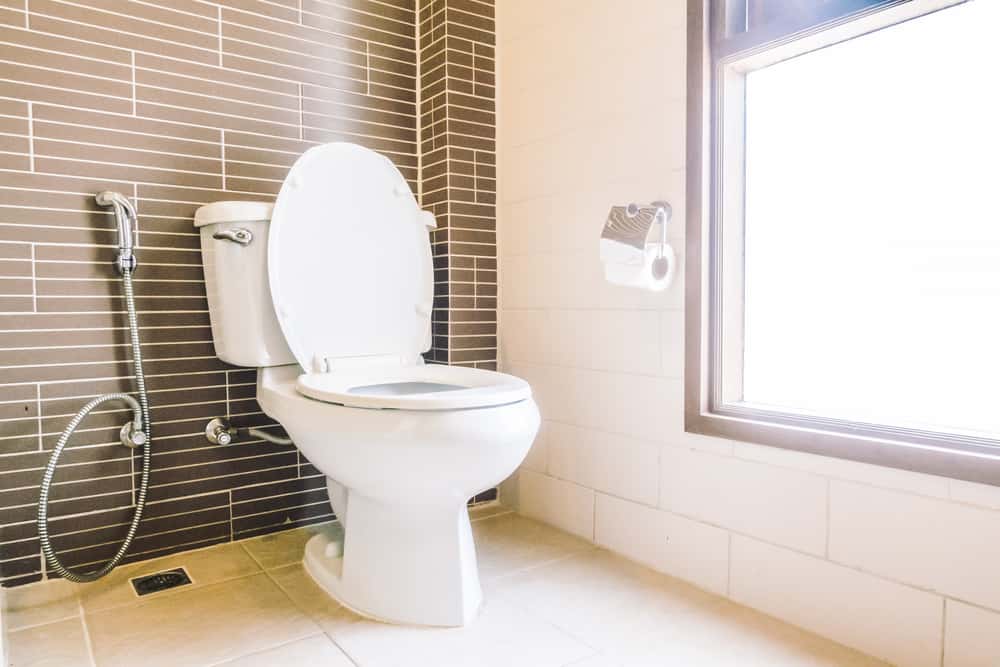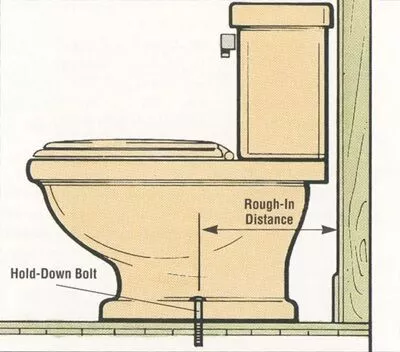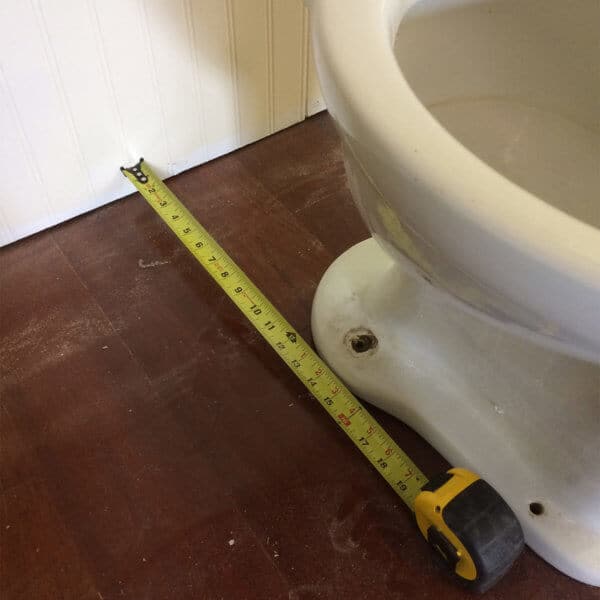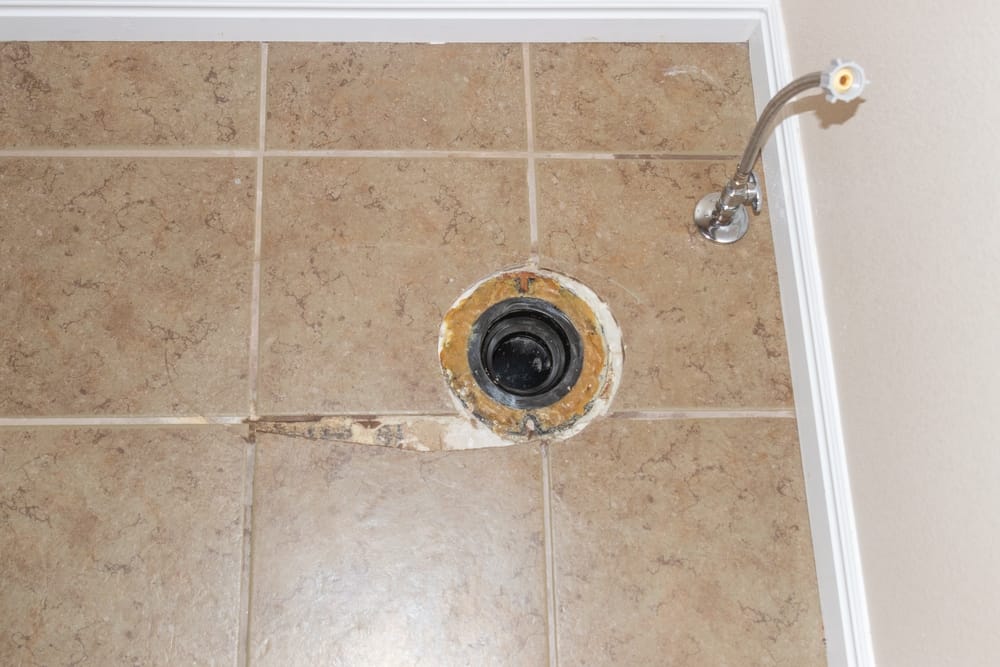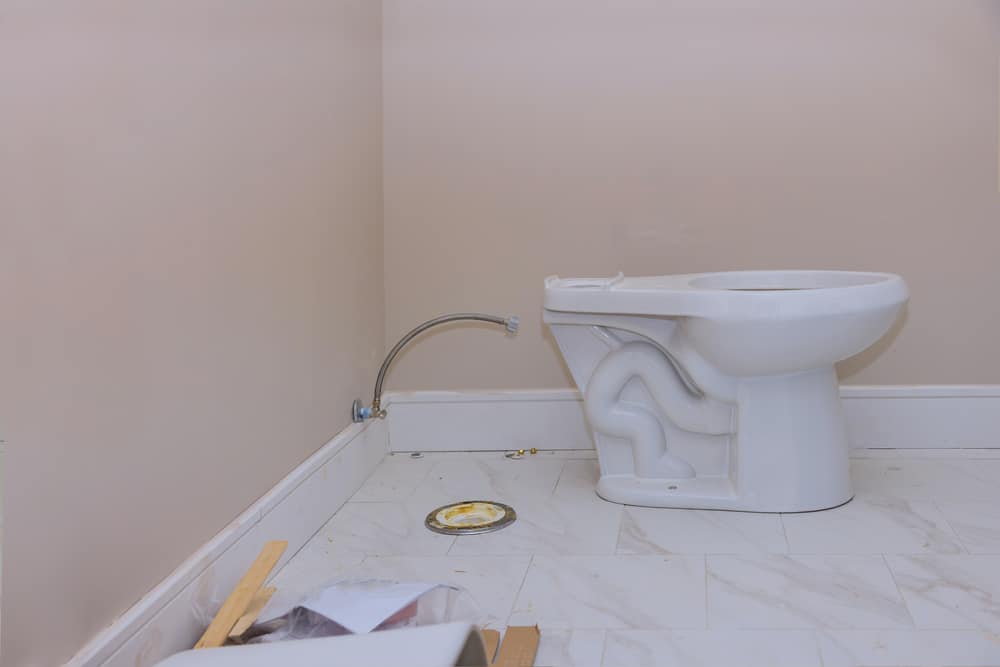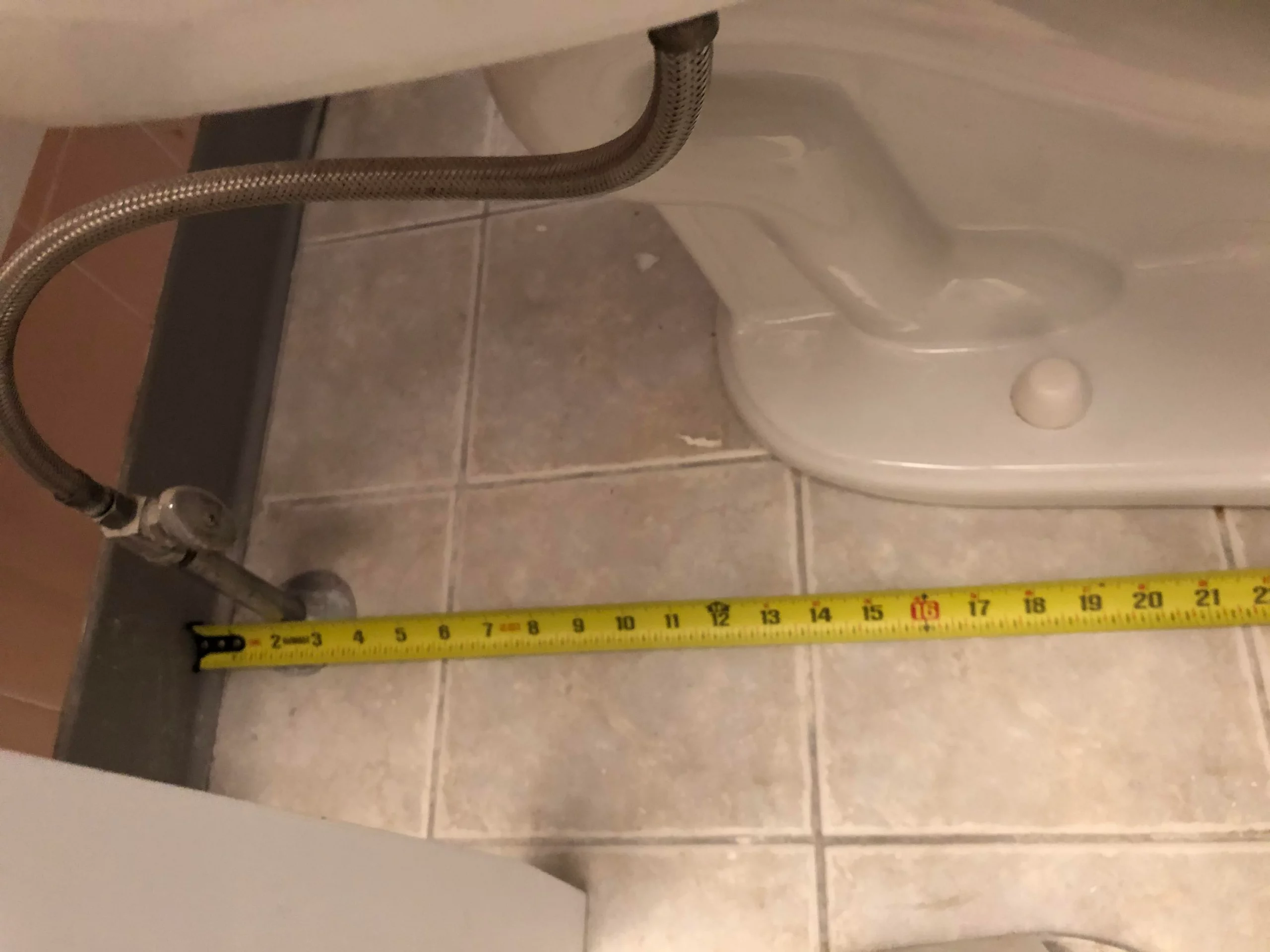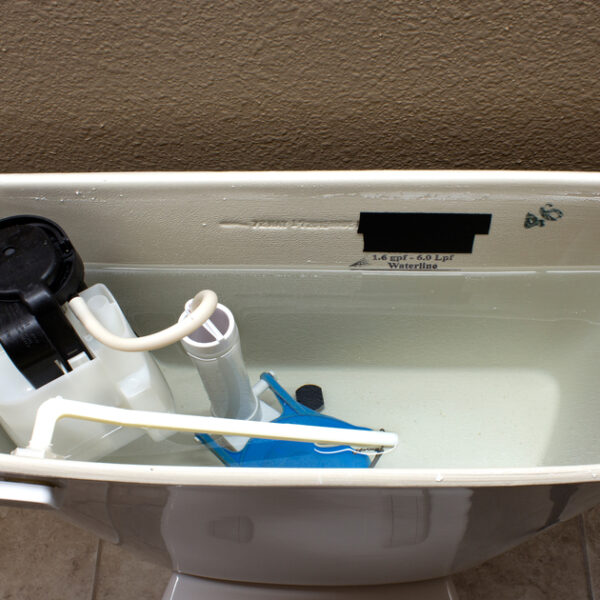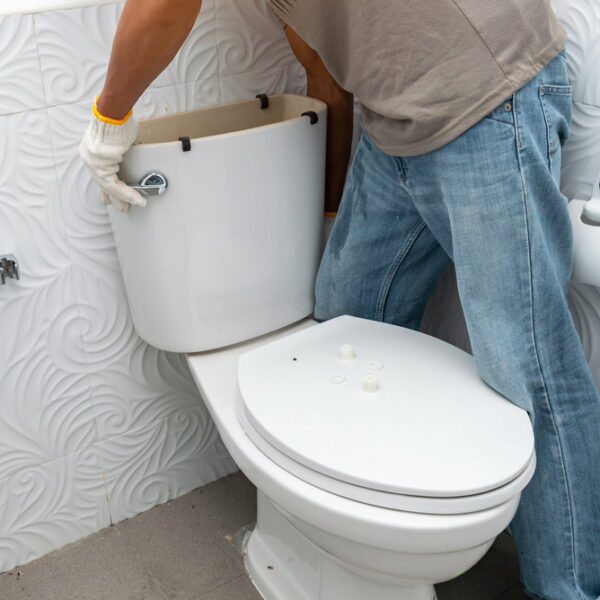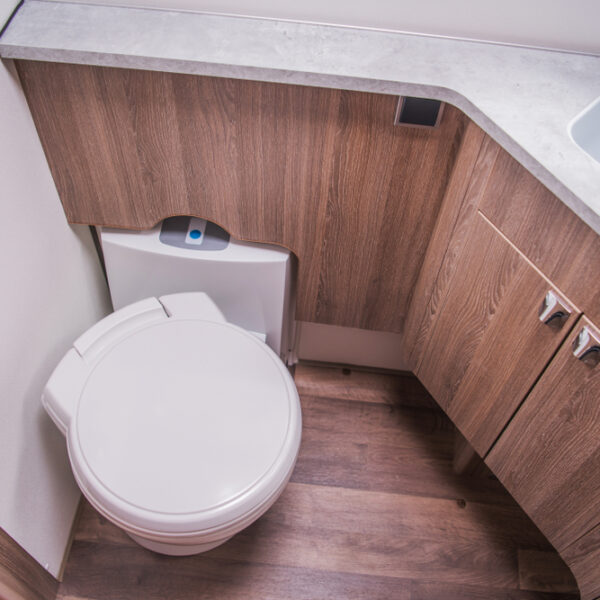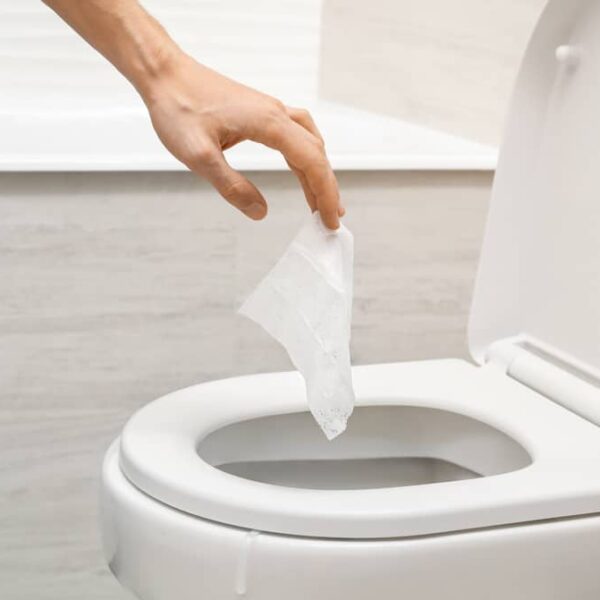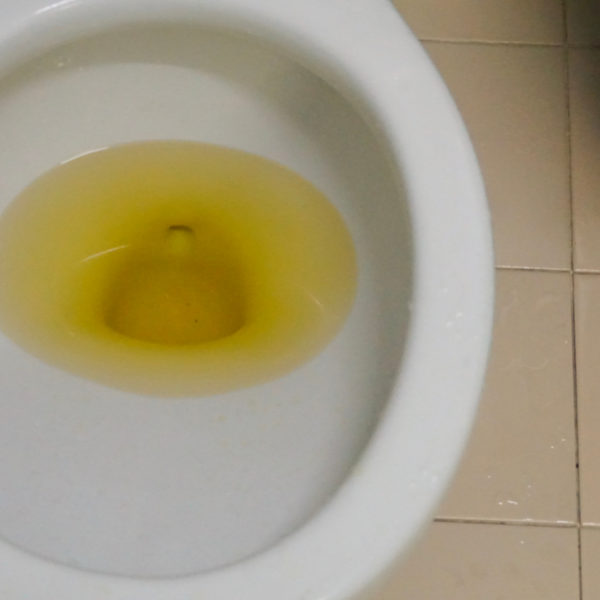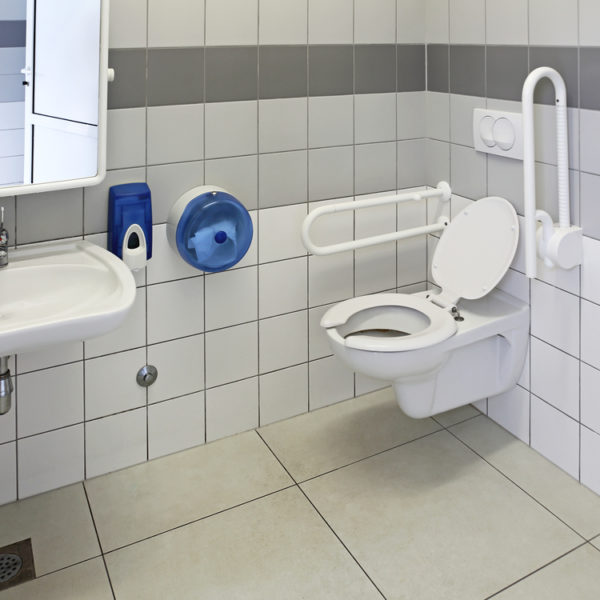When fitting a toilet, the key measurement is the “rough-in”. It’s the first thing you need to know, and if you get it wrong – or just guess what you think it is – it can cause all kinds of problems when it comes to installation.
To help you understand everything you need to know about this important measurement, in this post we talk about 10” vs 12” rough-in and how to measure them while also giving lots of other useful information to help ensure you install your toilet correctly.
What is rough-in?
When choosing a new toilet for your bathroom, before you even start thinking about which model or color to buy, you need to know the correct rough-in.
This is because if you choose a toilet with the wrong rough-in size, at best, the installation will look ugly – and at worst, you won’t be able to fit the toilet you’ve just bought in your bathroom.
But let’s start with the basics – what is rough-in?
In a nutshell, rough-in is the distance from the center of the flange – or drain hole – to the wall.
With regular toilets, working this out is easy, but with corner toilets, it’s slightly more complicated – but we’ll come to this later in the post.
What are the standard Rough-In sizes?
In the US, there are three possible rough-in sizes. Standard toilets are considered to be those with 12-inch rough-in, but 10-inch and 14-inch rough-ins are also possible.
Generally speaking, if you live in a modern house, the odds are that the rough-in in your bathroom is going to be 12 inches – although in older homes, 10 inches is more likely.
However, when buying a new toilet, this is not something you want to leave to chance because there are several factors other than just the age of a building that can dictate the size of the rough-in.
So in short, when buying a new toilet, your first step should always be to measure the rough-in to find out which type you need to buy in terms of installation and placement. After that, you can start thinking about things like aesthetics.
This is only logical since nobody would think of buying a sink or a bathtub without checking first if it was the right size – but when it comes to toilets, forgetting to check is a common error. So now let’s look in more detail about why it’s so important.
Why is it important to choose the right one?
When choosing a new toilet, it is almost certain that the plumbing has already been done in the bathroom it is destined for.
If you are replacing an old toilet in your home – or installing a new toilet in a house you have just bought – the plumbing will already be in place, so you need to choose a toilet that is compatible with the pipes that are already there.
On the other hand, if you are choosing a toilet for a new home that is still under construction, you are still unlikely to have much say over the configuration of the plumbing, so you still need to buy a toilet that fits the plumbing in the building.
In other words, you don’t usually get to decide the size of the rough-in in a bathroom – you just have to choose a toilet that’s compatible with the existing plumbing.
Once you know the rough-in of your bathroom, you can then simply check the specification sheet of any toilet you’re thinking of buying to make sure it’s compatible.
If you choose a toilet with the wrong rough-in, it won’t fit in your bathroom, and next, we can look at some of the reasons why.
The kinds of problem that can arise
If you choose a toilet model with the correct rough-in, once installed, the toilet and the toilet tank will be perfectly flush with the wall when placed over the drain hole.
However, if you choose a toilet with a smaller rough-in than the rough-in in the bathroom, it can potentially still be made to fit since there will be enough space.
For example, if the bathroom rough-in is 14 inches and you buy a toilet with a 12-inch rough-in, there will be enough space to fit the toilet – but you will have to compensate somehow for the two-inch gap between the toilet and the wall, which will probably look strange.
More serious, if you buy a toilet that’s too big – for example, a toilet with a 12-inch rough-in for a bathroom that only has a 10-inch rough-in – there won’t be enough space to fit the toilet in the bathroom.
In this case, your only options will be to modify the wall, modify the plumbing (especially the waste line but possibly the water supply lines too) or buy a new toilet.
All of these will cost you a lot of money, so it’s obviously much better to just get the rough-in right first time, as these examples illustrate.
Note that with two-piece toilets, it might be possible to “make it fit”, but this is hardly the approach you want to take when remodeling a bathroom, so it’s still best to do everything you can to get it right and avoid unnecessary alterations or building work.
What are the advantages and disadvantages of each type?
As we’ve seen, you don’t usually get to choose the size of the rough-in in a bathroom – although if you are involved in a significant bathroom remodel or are consulted while a house is being built, you may have the opportunity to give your opinion.
However, each of the three toilet dimensions has distinct advantages and disadvantages that dictate which size the plumber – or you – should choose. So let’s look at these now.
10-inch rough-in
Toilets with 10-inch rough-in were once the standard in the US, but they have since been supplanted by 12-inch models.
This is probably because the extra two inches of a 12-inch model gives you an extra level of comfort when compared with the smaller version.
However, the big advantage of 10-inch models – and the main reason why you might find a 10-inch rough-in in a modern house – is that they can help save space, especially toilets with round bowls.
If you have a particularly small bathroom, saving just two inches can make a great deal of difference, and in some cases, it can be the only option.
This is because building codes require a certain amount of clearance in front of the toilet bowl – as measured from the center of the drain hole.
In areas that follow the International Plumbing Code (IPC), the minimum amount of space in front of the toilet should be 21 inches. In areas following the Uniform Plumbing Code (UPC), the minimum distance is 24 inches.
In situations where a 12-inch model wouldn’t legally fit in the room, a toilet with a 10-inch rough-in may allow you to comply with building requirements.
12-inch rough-in
Toilets with 12-inch rough-in have replaced 10-inch models in the US as the industry standard toilet rough, mostly because the extra size makes them more comfortable to sit on, particularly those with an elongated bowl.
However, nowadays, it is also advantageous to have a toilet rough-in of 12 inches just because it’s the industry standard rough.
Because they are produced on a larger scale, 12-inch models are cheaper to buy than more specialized 10-inch models, and you’ll also have more choice because more types are made.
14-inch rough-in
A 14-inch rough-in is less common and is usually only used to meet specific plumbing requirements – for example if the drain can’t be placed closer to the wall, 14 inches may be the only way to obtain the necessary clearance.
The downside is that they take up more space than the other sizes, but they may allow you to incorporate more storage space into your bathroom behind the toilet or above it thanks to the extra inches of clearance.
How to measure toilet rough-in
Now we’ve seen why rough-in is so important along with the advantages and disadvantages of both types, now we can have a look at how to measure the rough-in in your house in different situations to remove any element of guesswork when you buy a new toilet.
Toilets come in different shapes and sizes, and there is also a difference between how to measure the rough-in when a toilet is installed and when no toilet is in place, so let’s think about each case in turn.
Measuring the rough-in for a regular toilet before it’s installed
If you have a regular toilet in your bathroom but no toilet is installed, measuring the rough-in is easy.
Simply take a tape measure and measure the distance from the center of the drain hole to the back wall.
The only thing you need to be careful about is that you need to measure to the bare wall because the finished wall is likely to be significantly thicker.
This means you need to take into account any drywall or stud wall that is in place, and you should also make sure you don’t measure from the baseboard that goes around the wall at the bottom.
If you have anything like this that increases the thickness of your bare wall, make sure you take it into account. For example, if you have a baseboard that is half an inch thick, either make sure you measure to the wall itself or take half an inch off the measurement you obtain.
Measuring the rough in for a regular toilet when the toilet is in place
When the toilet is in place, it makes measuring the rough-in slightly more complicated – but it’s still very easy.
Since you can’t see the drain hole, you need to measure the distance from the bolts or the bolt caps on either side of the toilet to the wall instead.
This works because the bolts you can see align perfectly with the center of the drain hole because they are screwed into either side of the toilet flange.
If your toilet is attached to the floor with four bolts, measure from the rear bolts. If your toilet has a skirted design and the bolts aren’t visible, you’ll have to try to work out where they are situated.
Measuring the rough-in for a corner toilet with no toilet in place
Measuring the rough-in for a corner toilet is slightly different since the back of the toilet is pointed towards the corner of the bathroom rather than towards the wall.
This means the rough in you need to measure is the distance from the center of the drain hole to the closest point on each of the side walls.
If the toilet hasn’t yet been installed, you will be able to see the drain hole.
Imagine a line running from the corner of the wall to the center of the drain hole. The distance you need to measure will be at a 45° angle from this line starting at the center of the drain hole and going back towards the wall on either side.
Measure both sides and check that both measurements are the same. If they are not, something has gone wrong, and you need to go back and take the measurements again.
Measuring a corner toilet with the toilet in place
Measuring the rough-in for a corner toilet with the toilet in place is probably the hardest to do, but it’s still not impossible.
First, you need to work out where the center of the drain hole is. To do this, find the bolts that hold the toilet in place and draw a line between them on the toilet seat (using a pencil or something else that can easily be removed without damaging the toilet).
Next, draw a line directly from the corner of the wall through the center of the toilet. Since two walls meet at a 90° angle, the line you draw should be at 45° from each wall.
Where the line between the bolts and the line from the corner of the bathroom meet is where the center of the drain hole is. When you have found this, the distance to the walls on either side is the measurement you need for the rough-in.
Final tip
As a final tip when measuring rough-in, remember that in the US, there are only three possibilities – 10 inches, 12 inches and 14 inches.
This means when taking a measurement, the result should be almost exactly one of these amounts, and if it isn’t, something has gone wrong.
If, when working out the rough-in, you measure something closer to 11 inches or 13 inches, it means something is not right – so you should go back and check everything you’ve done to find out where you went wrong.
Don’t leave it to chance
As we’ve seen, although 12-inch rough-in is the most common in the US, there are two other possibilities, so this is not something you want to leave to chance.
Each different size has advantages and disadvantages, but most of the time you don’t get to choose. Rather, your job is to work out the rough-in measurement in your bathroom and then find a toilet that will fit.
